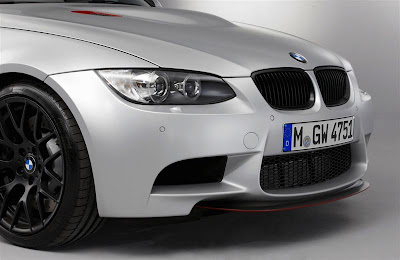2012 Ford F-Series Super Duty Delivers Best-in-Class Power, Towing Capability and Fuel Economy
•2012 Ford F-Series Super Duty tow rating is best-in-class at 17,500 pounds with conventional bumper hitch, and 24,500 pounds with fifth-wheel hitch
•Ford-engineered heavy-duty Power Stroke® diesel produces best-in-class 400 horsepower and 800 lb.-ft. of torque with best-in-class fuel economy
•Super Duty leads in both sales and customer satisfaction
The Ford F-Series Super Duty launched with best-in-class performance and capability, and a continuous stream of improvements for 2012 keeps this heavy-duty pickup at the head of the pack.
A beefed-up frame and hitch enable best-in-class conventional trailer tow ratings of 17,500 pounds for both the Ford F-350 and F-450 (dual rear wheels) equipped with the available 6.7-liter Power Stroke® V8 turbocharged diesel engine.
That's 1,000 pounds more than the Chevrolet Silverado and GMC Sierra 4x2 and 500 pounds more than the Silverado and Sierra 4x4. The F-450 with 24,500 pounds maximum fifth-wheel tow rating exceeds the 22,700 pounds of Silverado's fifth-wheel rating.
'The 2012 Ford F-Series Super Duty delivers best-in-class rankings in the attributes that matter most to heavy-duty pickup truck customers: towing capability, power and fuel economy,' said Brian Rathsburg, Super Duty marketing manager. 'Super Duty customers rely on their trucks as the tool to help them do more, do it faster and do it as cost-effectively as possible for their bottom lines.'
Higher-strength steel in a frame crossmember and an upgraded trailer hitch give the truck the additional towing capacity. These actions also boosted the F-350 DRW 4x2 pickup maximum payload to 7,110 pounds and maximum fifth-wheel towing to 22,700 pounds, each best-in-class ratings.
The hardware upgrades to the Super Duty complement software upgrades to the powertrain control system of the new Ford-engineered 6.7-liter Power Stroke V8 turbocharged diesel to make towing even easier.
The Power Stroke delivers best-in-class 800 lb.-ft. of torque and 400 horsepower. In an industry-first customer loyalty program, Ford provided the power upgrades free of charge to all first-in buyers of the 2011 Super Duty diesel pickup.
Quality Super Duty's customer satisfaction with overall quality tops all competitors with a rating of 83 percent. That compares with 77 percent for the comparable Ram and 73 percent for the comparable Chevrolet trucks. The quality ratings are according to the 2010 Global Quality Research Survey conducted by RDA Group of Bloomfield Hills, Mich., and commissioned by Ford.
Super Duty dominates the heavy-duty pickup segment with nearly 50 percent of total heavy-duty sales, an increase in market share of 4 percentage points over the same period last year and its highest share since 2001. This is according to a Ford analysis of registration data by R.L. Polk.
Furthermore, Super Duty accounted for 80 percent of the heavy-duty segment growth last year. In 2010 the segment was up 17 percent over 2009.
Green
The Ford-designed and Ford-built 6.7-liter Power Stroke diesel engine delivers as much as 20 percent better fuel economy than the 6.4-liter it replaced. The new Power Stroke isn't just fuel efficient, it's also the most powerful diesel pickup engine money can buy, rated at 400 horsepower and 800 lb.-ft. of torque. The engine also can run on up to B20 biodiesel fuel.
The standard 6.2-liter V8 gas engine has 15 percent better fuel economy compared with the previous engine and produces a best-in-class 405 lb.-ft. of torque and 385 horsepower. It is capable of running on E85 ethanol. New for 2012 is a compressed natural gas/propane prep engine option.
Each Super Duty pickup – diesel or gas – is mated to a heavy-duty TorqShift® six-speed SelectShift Automatic™ transmission.
Safe
Standard on all single-rear-wheel configurations are AdvanceTrac® with RSC® (Roll Stability Control™) and trailer sway control with hill start assist.
The AdvanceTrac control module uses additional software to monitor the truck's motion when a trailer is attached. Trailer sway control can determine from the yaw motion of the truck if the trailer is swaying and take measures – such as applying precise braking or reducing engine torque – to help reduce the trailer sway.
For further peace of mind, the available integrated trailer brake controller, factory-installed and covered by a Ford limited warranty, offers smoother and safer operation due to its ability to interface with multiple vehicle systems.
Normal braking is proportional to driver brake pressure for smooth brake stops at all speeds. If the vehicle's Anti-lock Brake System (ABS) is engaged, the special trailer brake kicks in to minimize the potential for trailer wheel lockup. In Super Duty trucks with trailer brake control towing trailers with electric brakes, the Ford system can, during a sway event, also apply brakes to the trailer to help stabilize it.
Smart
In addition to the best-in-class trailer towing capability, the Ford Super Duty offers an array of towing options from inside the bed thanks to the first-ever factory-installed and warranted fifth-wheel and gooseneck substructure directly attached to the frame. The electrical connection is mounted in the side of the bed wall, providing a clean installation.
New for 2012 is availability in models with the 6.75-foot cargo box. Factory gooseneck and fifth-wheel hitch kits are available as well.
The available 4.2-inch productivity screen helps customers get the most out of their Super Duty. Menu options, which include information related to fuel economy and towing performance, among others, are accessed through a five-way switch on the steering wheel. A towing checklist for conventional, fifth-wheel and gooseneck applications is available to help even novice towers tow like a pro.
Available Ford Work Solutions™ features Crew Chief™, a telematics and diagnostics system to inform fleet managers of their fleets' locations and maintenance needs; and Cable Lock, a security system to secure large tools or equipment in the cargo area.











































